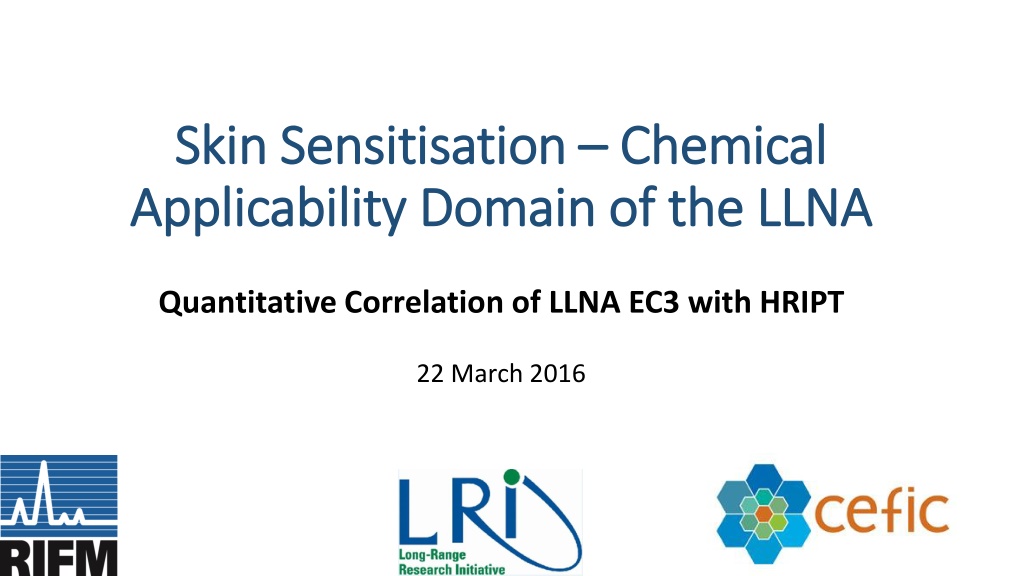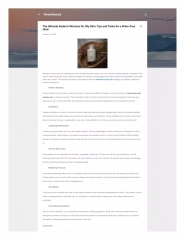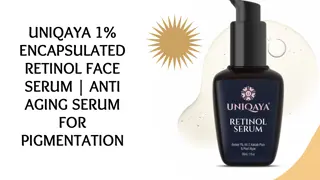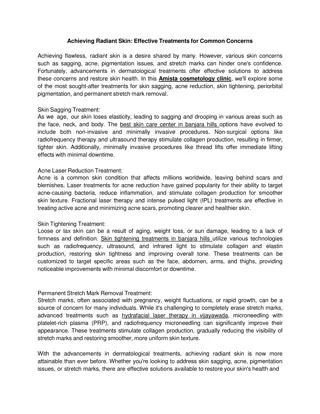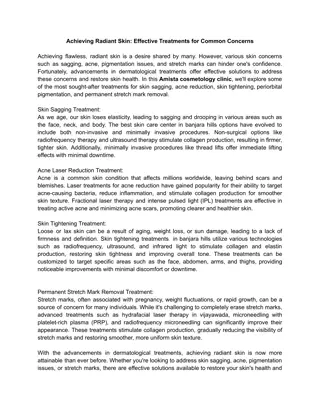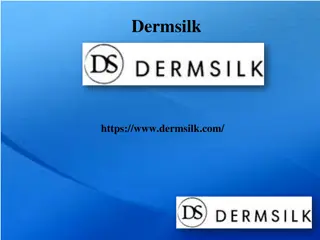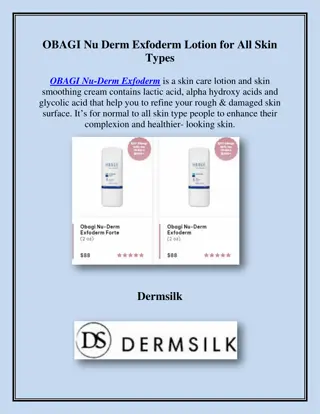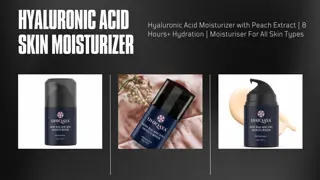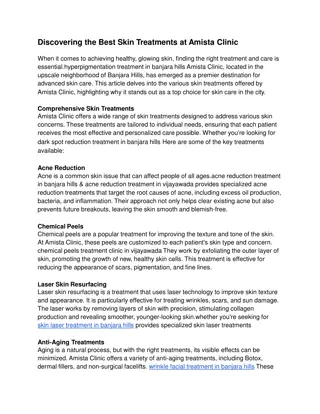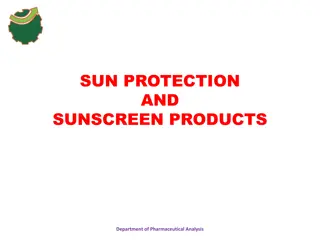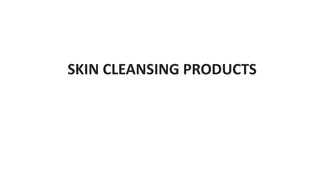Skin Sensitisation Skin Sensitisation
In this study, the correlation between skin sensitisation chemicals and regression analysis was examined. The research analyzed the applicability domain of the LLNA, identifying outliers and potency underpredictions. The results show a significant relationship between EC3 and NOEL values, indicating the potential for using EC3 to define NOEL in skin sensitisation studies. Outliers in potency were identified, shedding light on specific chemicals that may have been underpredicted by the LLNA. Overall, the study provides valuable insights into understanding skin sensitisation and its quantitative assessment.
Uploaded on Feb 24, 2025 | 0 Views
Download Presentation

Please find below an Image/Link to download the presentation.
The content on the website is provided AS IS for your information and personal use only. It may not be sold, licensed, or shared on other websites without obtaining consent from the author. Download presentation by click this link. If you encounter any issues during the download, it is possible that the publisher has removed the file from their server.
E N D
Presentation Transcript
Skin Sensitisation Skin Sensitisation Chemical Applicability Domain of the LLNA Applicability Domain of the LLNA Chemical Quantitative Correlation of LLNA EC3 with HRIPT 22 March 2016
Api Api, , Lalko Lalko and experimental human and murine skin sensitization experimental human and murine skin sensitization induction thresholds induction thresholds Cutaneous and Ocular Toxicology 34 (4) 298 Cutaneous and Ocular Toxicology 34 (4) 298- -302 and Basketter Basketter, 2015. Correlation between , 2015. Correlation between 302 Overall good agreement between EC3 and NOEL, with some outliers Group 1 good agreement 42 cases Group 2 LLNA underpredicts NOEL 7 cases Group 3 LLNA overpredicts NOEL 7 cases
For regression analysis For regression analysis Group 1 (good agreement) Remove cases where EC3 or NOEL is given as <x or >x Remove cases footnoted No sensitization was observed in human predictive studies. Doses reported reflect the highest concentration tested, not necessarily the highest achievable NOEL This leaves 31 cases
Regression analysis Regression analysis logNOEL vs logEC3 5 4.5 4 3.5 3 y = 1.0404x - 0.0917 R = 0.7862 2.5 2 2 2.5 3 3.5 4 4.5 logNOEL = 1.04( 0.10)logEC3 0.09(( 0.34) n = 31, R2 = 0.786, AdjR2 = 0.779, s = 0.24, F = 107
Interpretation of regression equation Interpretation of regression equation logNOEL = 1.04( 0.10)logEC3 0.09(( 0.34) n = 31, R2 = 0.786, AdjR2 = 0.779, s = 0.24, F = 107 s (standard deviation of residuals) = 0.24 corresponds to 95% confidence limits of a factor of 3 on the NOEL as predicted from the EC3 Slope and intercept not significantly different from 1 and 0 respectively, i.e. . EC3 can be used directly to define NOEL If outliers can be recognised
Outliers: potency Outliers: potency underpredicted underpredicted by LLNA by LLNA EC3 ( g/cm2) NOEL ( g/cm2) Chemical Benzaldehyde > 6250 590 Vanillin > 1250 1100 Trans-2-Hexenal 1012 24 6-Methyl-3,5-heptadiene-2-one 1250 110 2-Methoxy-4-methylphenol 1450 118 Methyl 2-nonynoate 625 24 Treemoss absolute > 5000 700 Treemoss absolute not considered further potency variable depending on composition, particularly atranol and chloratranol content
Underpredicted Underpredicted benzaldehyde benzaldehyde and vanillin and vanillin Vanilin Benzaldehyde O O OMe OH Schiff base electrophiles, aromatic Most aromatic aldehydes are weak or NS in LLNA, weaker than predicted by the QMM for SB: pEC3 = 1.12 * + 0.42logP 0.62 (Roberts et al 2007), developed from data on aliphatics
QMM prediction for QMM prediction for benzaldehyde benzaldehyde and vanillin and vanillin Although aromatic aldehydes are outside the applicability domain The QMM predicts (assuming NOEL = predicted EC3): Benzaldehyde NOEL 1078 (actual 590) factor of 1.8 Vanillin NOEL 3935 (actual 1181) factor of 3.3 Within/close to 95% confidence limits of logNOEL vs logEC3 regression
Underpredicted Underpredicted potency: 6 6- -methyl methyl- -3,5 potency: trans 3,5- -heptadienal heptadienal trans- -2 2- -hexenal and hexenal and Michael acceptors, volatile but NOEL potency < predicted from Michael acceptor QMM, so volatility alone cannot explain the large underpredictions Impurities (eg from aldol dimerisation) in samples tested in HRIPT may be responsible
Underpredicted Underpredicted potency potency 2 2- -methoxy methoxy- -4 4- -methylphenol methylphenol O OH O Quinone OH OMe OH Quinone methide OH O Pro- or pre-electrophile, activated by oxidation, either after metabolic demethylation or directly to quinone methide. Free radical mechanisms also possible. Variety of possible mechanisms makes inter-species variation more likely
Underpredicted Underpredicted potency potency 2 2- -methoxy methoxy- -4 4- -methylphenol methylphenol O OH O Quinone OH OMe OH Quinone methide OH O Pro- or pre-electrophile, activated by oxidation, either after metabolic demethylation or directly to quinone methide. Free radical mechanisms also possible. Variety of possible mechanisms makes inter-species variation more likely
Underpredicted Underpredicted potency potency methyl 2 methyl 2- -nonynoate nonynoate EC3 NOEL MA QMM prediction Me 2-nonynoate 625 24 450 Me 2-octynoate <125 118 412 Simplest interpretation: The EC3 value of 625 for methyl 2-nonynoate is correct The NOEL value of 24 for methyl 2-nonynoate is anomalous The EC3 value of <125 for methyl 2-octynoate is anomalous The NOEL of 118 for methyl 2-octynoate is anomalous This pattern suggests that the recorded potency values are influenced by potent impurities present in the samples tested, except for methyl 2-nonynoate (LLNA) which must have contained only insignificant levels. 20th century literature says that potency of these ynoates is low when freshly synthesised but increases with age (English and Rycroft 1988) consistent with the impurity interpretation QMM: pEC3 (mol%) = 0.24logk + 2.11 Roberts, D.W., Natsch, A. (2009). High throughput kinetic profiling approach for covalent binding to peptides: application to skin sensitization potency of Michael acceptor electrophiles. Chemical Research in Toxicology 22, 592-603. English JS and Rycroft RJ.1988. Allergic contact Dermatitis from methyl octine and methyl heptine carbonates. Contact Dermtitis 18: 174-175
Outliers: potency Outliers: potency overpredicted overpredicted by LLNA by LLNA EC3 ( g/cm2) NOEL ( g/cm2) Chemical -Amyl cinnamal -Hexyl cinnamal 2420 23600 2372 23600 Benzyl salicylate 725 17700 Hexyl salicylate 45 35400 Isocyclocitral -iso-Methylionone 1825 7000 5450 70000 OTNE 6825 47200 Benzyl and hexyl salicylate EC3 values are anomalous compared to other salicylates (weak or NS). By-products from synthesis suspected. The other 5 may be explained by autoxidation being favoured under LLNA open application conditions
Overpredicted Overpredicted by LLNA by LLNA Amyl Amyl- - and hexyl and hexyl- -cinnamal cinnamal Ph OOH Ph O2 O O R Peracid, reactive epoxidising agent R OH Ph Ph O O O R R Highly electrophilic benzylic epoxide Extent of this reaction, and hence degree of sensitization, depends on accessibility to oxygen
Overpredicted Overpredicted by LLNA by LLNA hydroperoxide hydroperoxide precursors precursors O O O O O2 HOO HOO O2 Isocylcocitral, 1335-66-6 One of 3 tertiary allylic hydroperoxides that can result from autoxidation a-iso-Methylionone, 127-51-5 Doubly allylic tertiary hydroperoxide that can result from autoxidation OOH O2 O OTNE, 54464-57-2 One of 3 tertiary allylic hydroperoxides that can result from autoxidation
Conclusions Conclusions LLNA EC3 predicts NOEL directly for most chemicals Underpredictions of potency can be attributed to and anticipated for: Aromatic Schiff base electrophiles Chemicals likely to contain impurities/by-products from synthesis Pro-/pre-haptens with complex activation pathways Overpredictions of potency can be attributed to and anticipated for: Chemicals readily susceptible to autoxidation under LLNA conditions (Consistent with earlier findings for LLNA false positives )
